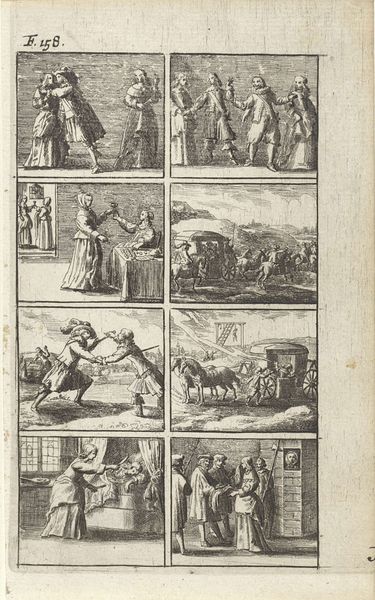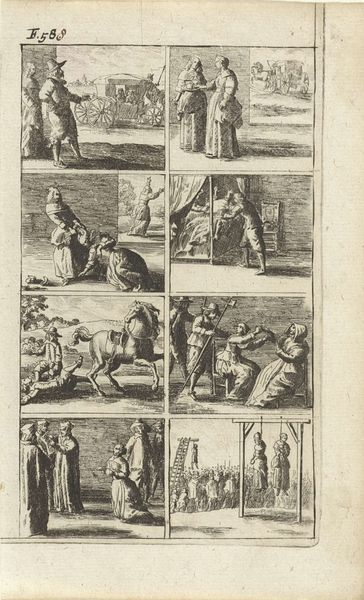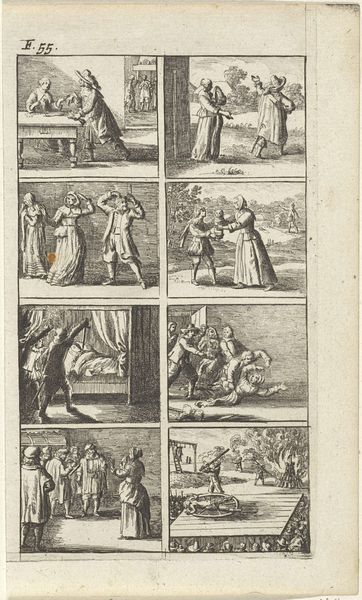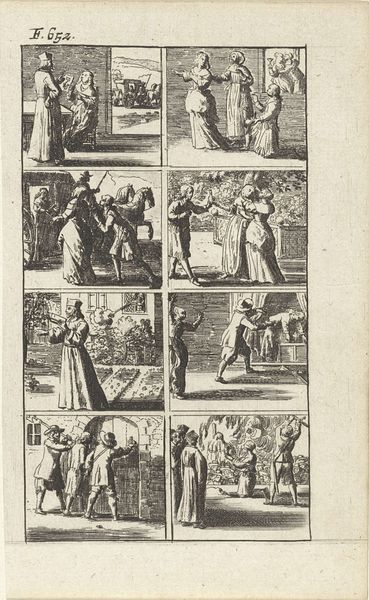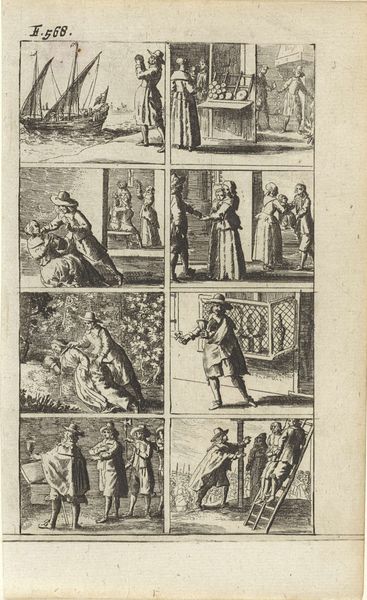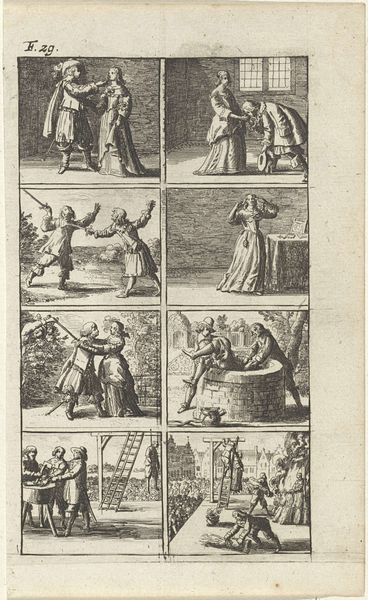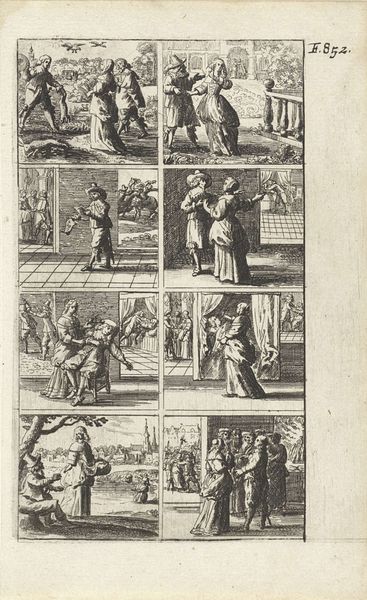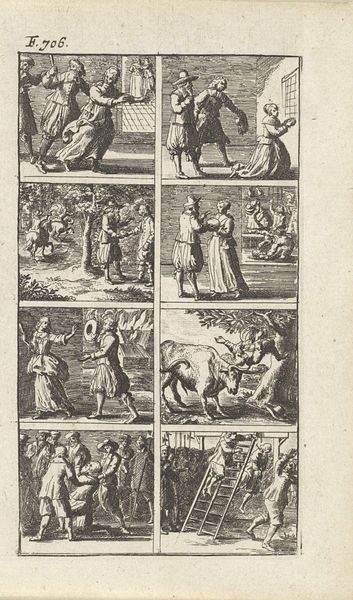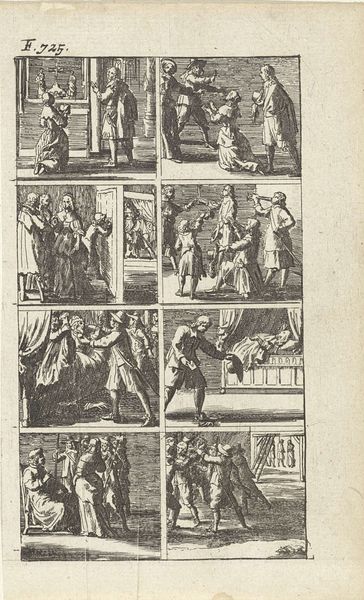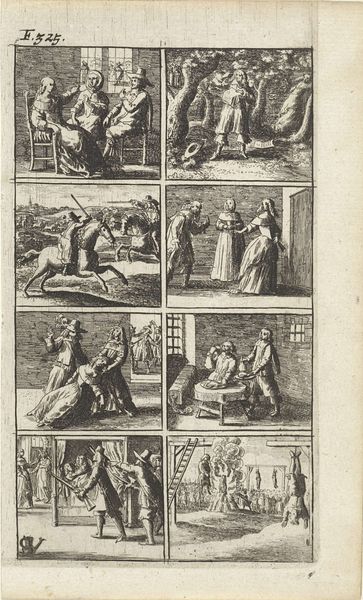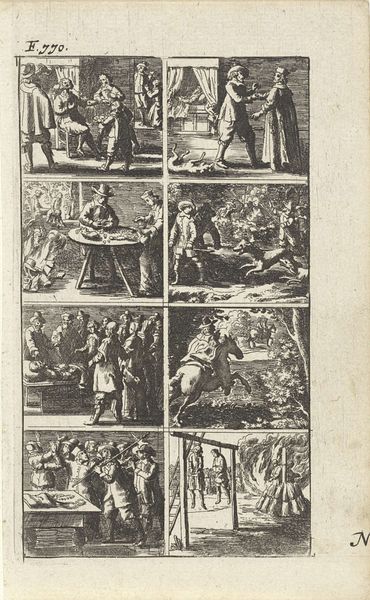
Verhaal met voorstellingen van moord en doodstraf (F. 127.) 1667
0:00
0:00
abrahamdirckszsantvoort
Rijksmuseum
print, engraving
#
narrative-art
#
baroque
# print
#
history-painting
#
engraving
Dimensions: height 155 mm, width 94 mm
Copyright: Rijks Museum: Open Domain
Editor: Here we have "Verhaal met voorstellingen van moord en doodstraf", or "Story with Scenes of Murder and Capital Punishment", a 1667 engraving by Abraham Dircksz. Santvoort, currently residing at the Rijksmuseum. It’s… quite graphic. What's your take on its depiction of justice? Curator: I see a clear connection to the material realities of the time. Prints like this, mass-produced, disseminated the harsh realities of justice. Think about the labor involved: the engraver's painstaking work, the paper production, the distribution networks. This wasn’t just about high art; it was about information, social control, and consumption. What audience was this meant for, and what impact might it have had on their perception of justice? Editor: That's interesting. I was just thinking about how desensitizing repetitive imagery like this could become, and you're right, it would depend so much on who was seeing it. It's hard to look at without wondering about the economics that would keep the artist going. The market must have been there, however grim. Curator: Exactly! We see a connection between the material conditions and the subject matter itself. The depiction of punishment wasn't simply a neutral representation; it was part of a larger system of power dynamics and labor relations. The act of creating and disseminating this image reinforces the social hierarchies it portrays. Do you agree it’s essentially early modern clickbait? Editor: Definitely agree about the connection to modern media – even the way it's structured with panels! Knowing it was reproduced and disseminated widely shifts my perspective. Curator: By focusing on the material and social context, we move beyond simply aesthetic judgments and start to unpack the complex relationships between art, power, and everyday life in the 17th century. Editor: I never really considered how the method of creating art could also contribute to solidifying or questioning societal norms. Thanks for making me consider it that way! Curator: Absolutely. Thinking about art as labor is very productive.
Comments
No comments
Be the first to comment and join the conversation on the ultimate creative platform.
